Some thoughts on art – part 1 (Zizek)
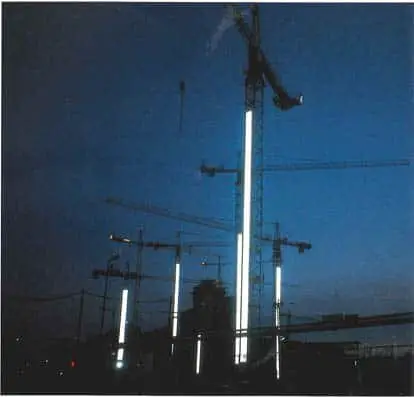

Some thoughts on art – part 1 (Zizek)
Some thoughts on art – part 2 (Arendt).
Some thoughts on art – part 3 (Zizek again)
In one of his books, The Fragile Absolute ([amazon asin=1844673022&title=Amazon]), Zizek looks at transformation of art in modernity in his usual peculiar way. He posits, quite convincingly – at least to a non-artist like myself – that unlike Adorno’s critical view of (modern) art as commodification, there is a concurrent process from the artist that enables the changes in art:
Its basic feature is not only the much-deplored commodification of culture (art objects produced for the market), but also the less noted but perhaps even more crucial opposite movement: the growing ‘culturalization’ of the market economy itself. With the shift towards the tertiary economy (services, cultural goods), culture is less and less a specific sphere exempted from the market, and more and more not just one of the spheres of the market, but its central component (from the software amusement industry to other media productions). What this short circuit between market and culture entails is the waning of the old modernist avant-garde logic of provocation, of shocking the establishment.
Today, more and more, the cultural-economic apparatus itself, in order to reproduce itself in competitive market conditions, has not only to tolerate but directly to provoke stronger and stronger shocking effects and products. Just think of recent trends in the visual arts: gone are the days when we had simple statues or framed paintings – what we get now are exhibitions of frames without paintings, dead cows and their excrement, videos of the insides of the human body (gastroscopy and colonoscopy), the inclusion of olfactory effects, and so on.13 Here again, as in the domain of sexuality, perversion is no longer subversive: such shocking excesses are part of the system itself; the system feeds on them in order to reproduce itself. Perhaps this is one possible definition of postmodern as opposed to modernist art: in postmodernism, the transgressive excess loses its shock value and is fully integrated into the established artistic market.14
Zizek recounts an interesting anecdote of how everyday matters can be confused with art, and vice versa – where art is mistaken for the general everyday process.1 He continues:
Another way to make the same point would be to emphasize how, in today’s art, the gap that separates the sacred space of sublime beauty from the excremental space of trash (leftover) is gradually narrowing, up to the paradoxical identity of opposites: are not modern art objects more and more excremental objects, trash (often in a quite literal sense: faeces, rotting corpses … ) displayed in – made to occupy, to fill in – the sacred place of the Thing? And is not this identity in a way the hidden ‘truth’ of the entire movement? Is not every element that claims the right to occupy the sacred place of the Thing by definition an excremental object, a piece of trash that can never be ‘up to its task’? This identity of opposite determinations (the elusive sublime object and/or excremental trash) – with the ever-present threat that the one will shift into the other, that the sublime Grail will reveal itself to be nothing but a piece of shit – is inscribed in the very kernel of the Lacanian objet petit a.
If we are in any doubt of this, there is a great amount of artists following Marcel Duchamp, or the Arte Povera movement. The point here is not to diminish modern (or post-modern) art; Zizek’s point is more profound than ‘taking the piss’ – the loss of the unifying objective (say religion, or the sublime, or even simply beauty – what Lefort calls ‘markers of certainty’) is the direct cause for modern art being what it is: excrement! This does not, of course, mean that because it is excrement, that it is also something to be disregarded as futile or pointless (though perhaps because it is pointless, modern art require explanation, and insider’s view, a mission or statement of sorts – what Zizek calls “provocation”).
And here is where Zizek’s genius comes to the front:
the very fundamental matrix of sublimation, that of the central Void, the empty (‘sacred’) place of the Thing exempted from the circuit of everyday economy, which is then filled in by a positive object that is thereby ‘elevated to the dignity of the Thing’ (Lacan’s definition of sublimation), seems to be increasingly under threat; what is threatened is the very gap between empty Place and the (positive) element filling it in. If, then, the problem of traditional (premodern) art was how to fill in the sublime Void of the Thing (the pure Place) with an adequately beautiful object – how to succeed in elevating an ordinary object to the dignity of a Thing – the problem of modern art is, in a way, the opposite (and much more desperate) one: one can no longer count on the Void of the (Sacred) Place being there, offering itself to be occupied by human artefacts, the task is to sustain the Place as such, to make sure that this Place itself will ‘take place’ – in other words, the problem is no longer that of horror vacui, of filling in the Void, but, rather, that of creating the Void in the first place. Thus the co-dependence between an empty, unoccupied place and a rapidly moving, elusive object, an occupant without a place, is crucial.15The point is not that there is simply the surplus of an element over the places available in the structure, or the surplus of a place that has no element to fill it out – an empty place in the structure would still sustain the fantasy of an element that will emerge and fill out this place; an excessive element lacking its place would still sustain the fantasy of an as yet unknown place waiting for it. The point is, rather, that the empty place in the structure is in itself correlative to the errant element lacking its place: they are not two different entities, but the obverse and reverse of one and the same entity – that is, one and the same entity inscribed into the two surfaces of a Moebius strip. In other words, the paradox is that only an element which is thoroughly ‘out of place’ (an excremental object, a piece of ‘trash’ or leftover) can sustain the void of an empty place, that is, the Mallarméan situation in which rien n’aura eu lieu que le lieu (‘nothing but the place will have taken place’) – the moment this excessive element ‘finds its proper place’, there is no longer any pure Place distinguished from the elements which fill it out.16
What we have, in less convoluted words, is art that no longer aspires to recreate or capture the beauty of the world – to get closer to it; quite the opposite, in its realization that that task cannot be achieved, art debases the world itself in order to be closer to it. It is in this sense that today’s ideology is characterised – the political realm is one of cynicism; just as art cannot recreate the beauty of the world, so too in politics we debase the world itself (all politicians are corrupt, there is absolutely no possibility of change, it is in the nature of politics not to represent the people, etc.). As the world is debased, so the need/will to change it (and Zizek is in fact not an exception here, for despite his analysis he too emphasises that our current situation cannot accommodate change and thus reverses the last thesis on Feuerbach – wrongly in my opinion).
There is another political point to be made here as well, following the newly found aspect of art as a political statement (e.g. Obama poster by Shepard Fairey) though perhaps for future post.
Zizek’s Notes:
13. This tendency often leads to the comic confusion whereby a work of art is mistaken for an everyday object, or vice versa. Recently, in Potsdamerplatz, the largest construction site in Berlin, the co-ordinated movement of dozens of gigantic cranes was staged as an art performance – doubtless perceived by many uninformed passers-by as part of an intense construction activity. . . . I myself made the opposite blunder during a trip to Berlin: I noticed along and above all the main streets numerous large blue tubes and pipes, as if the intricate cobweb of water, phone, electricity, and so on, was no longer hidden beneath the earth, but displayed in public. My reaction was, of course, that this was probably another of those postmodern art performances whose aim was, this time, to reveal the intestines of the town, its hidden inner machinery, in a kind of equivalent to displaying on video the palpitation of our stomach or lungs – I was soon proved wrong, however, when friends pointed out to me that what I saw was merely part of the standard maintenance and repair of the city’s underground service network.
14. It is worth noting that it is Lacanian theory, with its link between surplus-enjoyment and surplus-value, which offers the best theoretical frame for grasping this new trend, with respect to the fact that one of the standard criticisms of Lacan is that his theory is abstract, proto-Kantian, dealing with the ahistorical symbolic system, unaware of the concrete sociohistorical conditions of its subject matter. We can see apropos of our example how, in clear contrast to this criticism, the cultural studies which celebrate new multiple perverse forms of artistic production do not take sufficiently into account how these phenomena are grounded in global capitalism, with its accelerated commodification – it is Lacanian theory that enables us fully to conceptualize this link, effectively to rehistoricize the topics of cultural studies.
15. Gilles Deleuze, The Logic of Sense [get it on [amazon text=Amazon&asin=0231059833]], New York: Columbia University Press 1987, p. 41; see also Chapter 5 of Zizek, The Metastases of Enjoyment [get it on [amazon text=Amazon&asin=1844670619]].
16. Perhaps one way to imagine this notion of ‘nothing but the place taking place’ is the experience of seeing that the paper spewed out by the fax machine is blank: does this blankness mean that the machine has simply malfonctioned, that the text typed on the paper at the other end was not transmitted, or that the person at the other end (by mistake, in all probability) put a blank piece of paper into the machine (or inserted the paper with the wrong – blank – side down)? Do we not encounter here a kind of mechanical counterpart to the Nietzschean distinction between ‘willing nothing’ and ‘[actively] willing the nothingness itself: the blank paper can mean ‘the message didn’t get through’ or ‘the void we see is the message the sender put in’? So how do we decide? By looking closely at the paper: if there are tiny stains on it, meaningless material leftovers, it means that the void is the message, that is, that ‘nothing but the place took place’ – it was not that ‘nothing took place’, since, in a way, the empty place itself took place. . . .
Citations are from Zizek’s [amazon text=The Fragile Absolute&asin=1844673022], part of [amazon asin=1844673278&text=The Essential Zizek] (which for once I think is correctly identified by publishers as essential [insert author] series).
Some thoughts on art – part 2 (Arendt).
Some thoughts on art – part 3 (Zizek again)
Sign up for Paradox of the Day mailing list and please visit our Patreon support page.


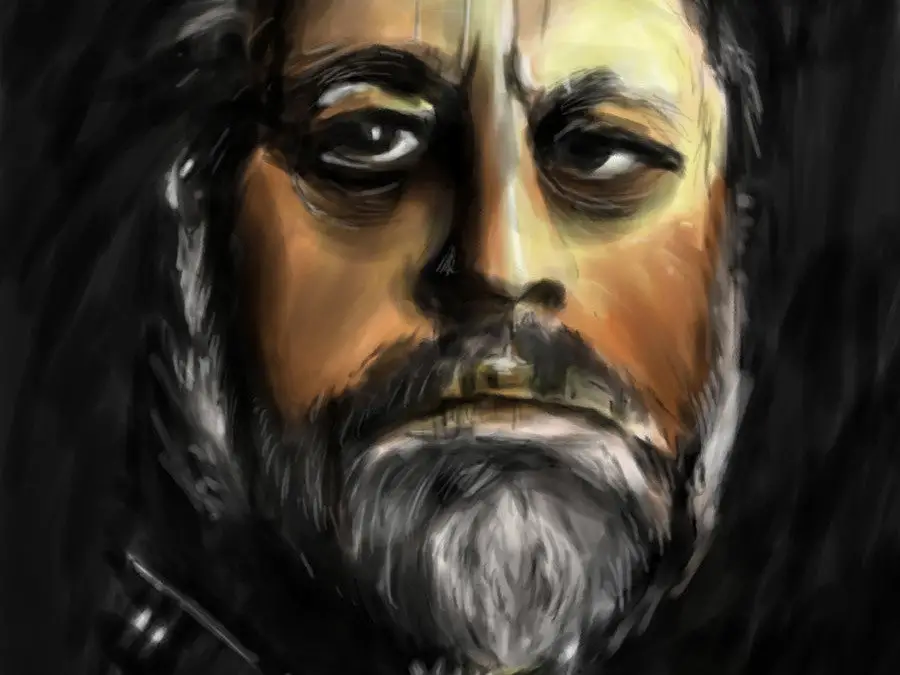


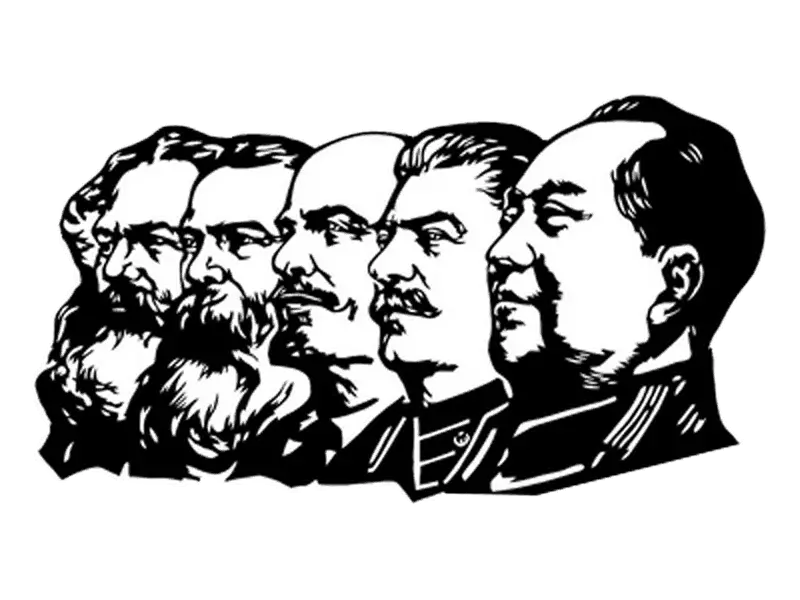
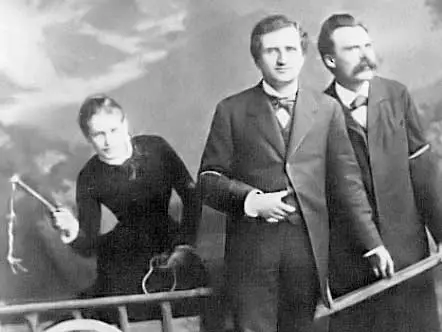
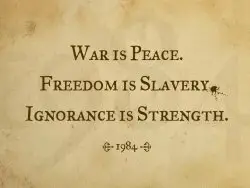

when was this article written?
This is from September 2014, quite a while back.
This is from 2014, so quite some time ago.